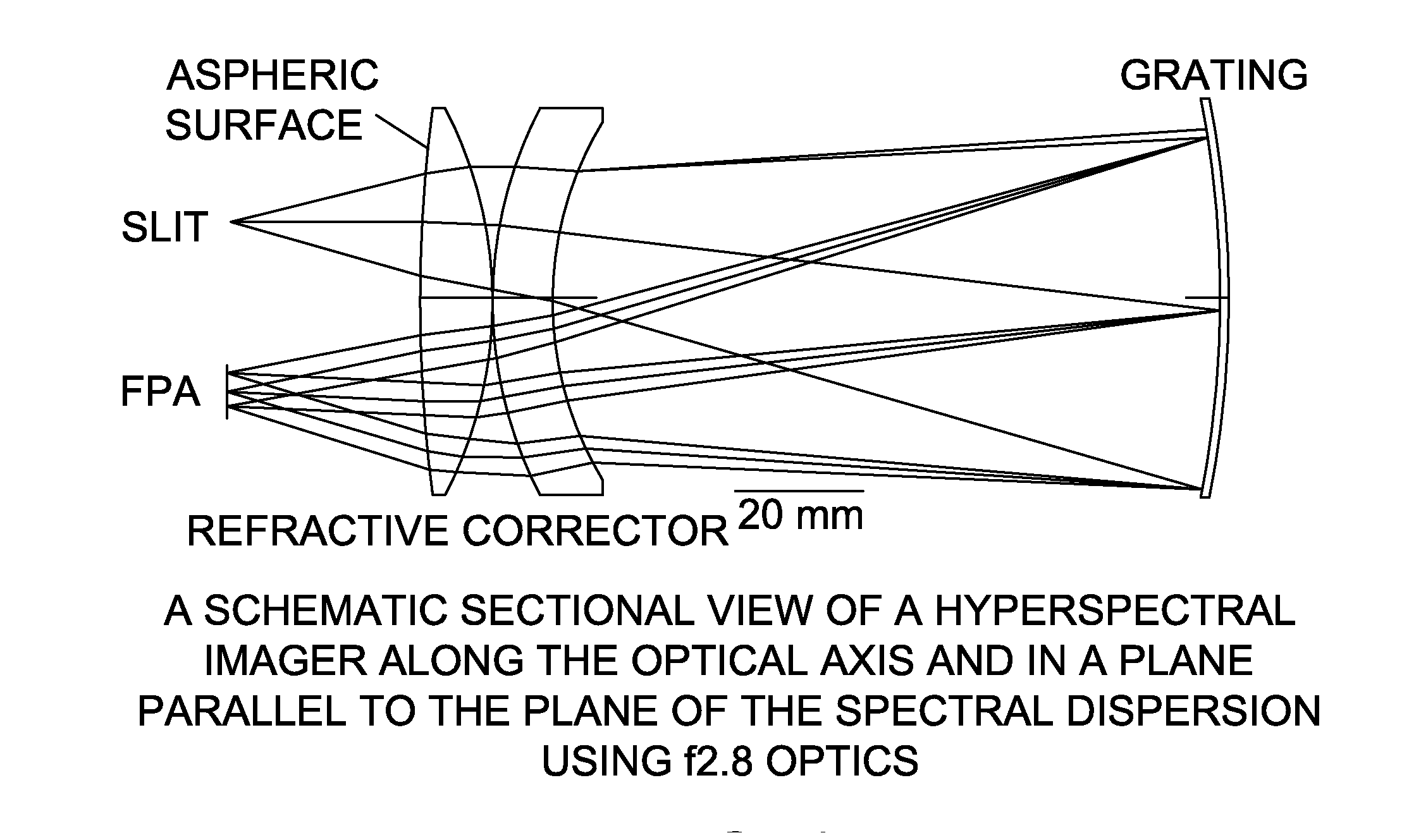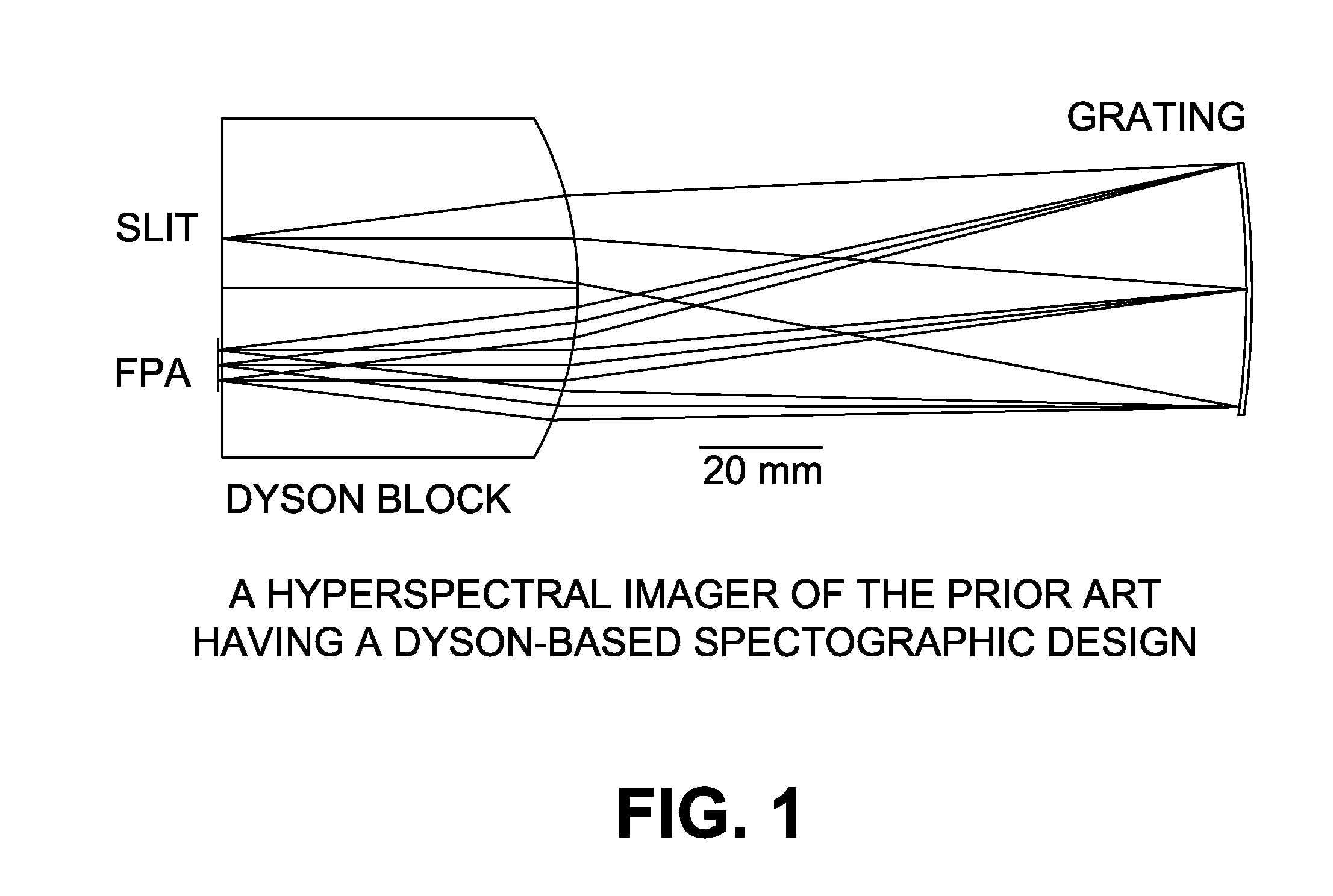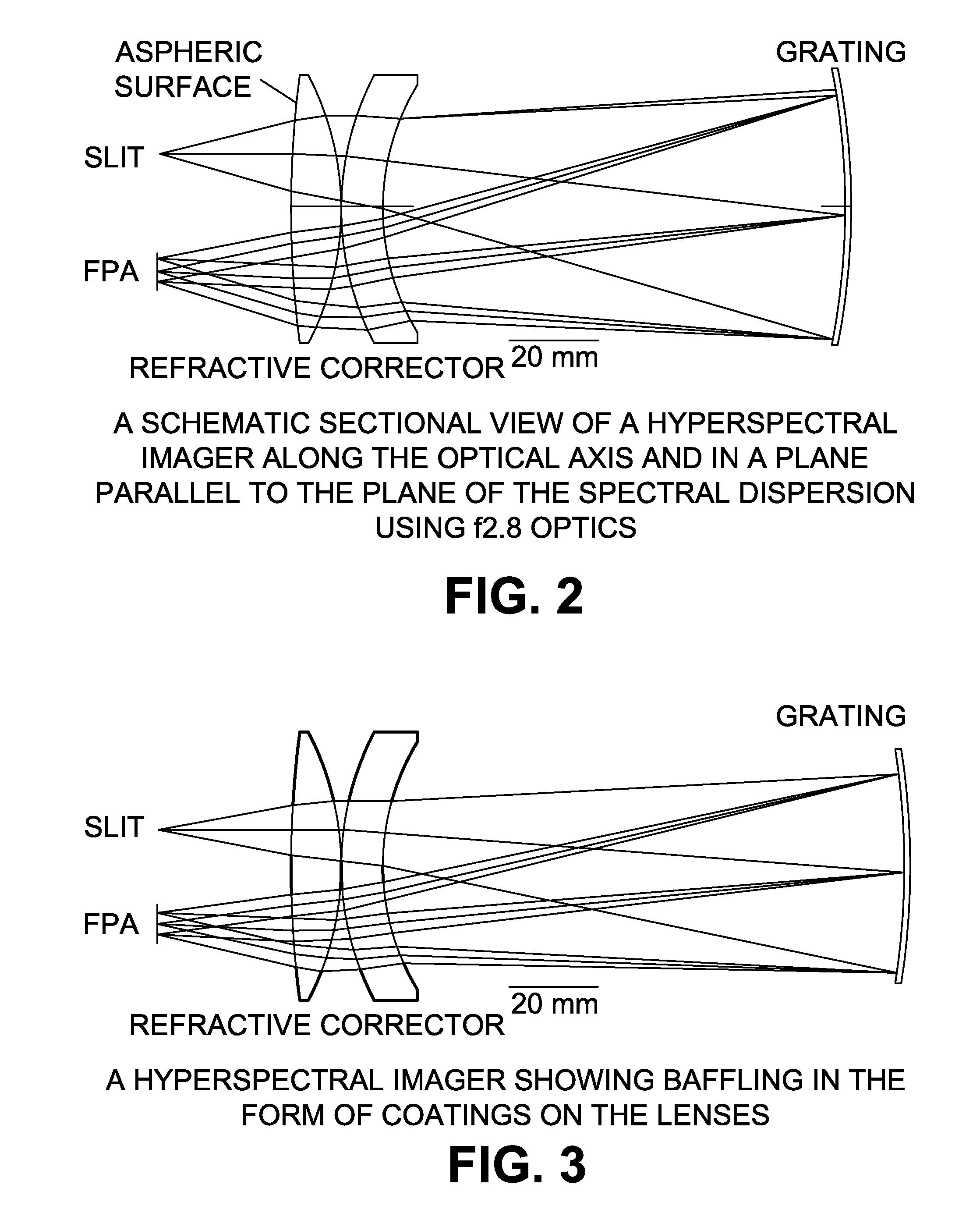Compact, light-transfer system for use in image relay devices, hyperspectral imagers and spectographs
a light-transfer system and image relay technology, applied in the field of optical design of light-transfer imagers, can solve the problems of affecting the quality of the image, the inability to achieve or maintain the alignment of the multiple optical axes, and the large size of the current light-transfer imager based on an “offner” design, etc., and achieves the effect of convenient manufacture, high quality and compact structur
- Summary
- Abstract
- Description
- Claims
- Application Information
AI Technical Summary
Benefits of technology
Problems solved by technology
Method used
Image
Examples
Embodiment Construction
[0055]With reference to the Figures, improved compact, light-transfer imaging systems are described.
[0056]In a first type of embodiment as shown in FIGS. 2-15, the improved systems provide an optical assembly having a single optical axis for the imaging function of non-spectrally-dispersed light entering a spectrograph through a slit or pinhole onto a curved, reflecting dispersion grating with the spectrally dispersed light being subsequently focused on an FPA using the same optical assembly. This approach greatly reduces smile and keystone distortions and the designs represent a significant advantage over Offner-type designs.
[0057]In a second image relay device embodiment as shown in FIG. 16, an optical assembly is provided for the two-dimensional imaging function for light entering the relay device onto a curved reflecting mirror and for the reflected light being subsequently focused on an FPA using the same optical assembly.
[0058]In each embodiment, the improved optical design pe...
PUM
 Login to View More
Login to View More Abstract
Description
Claims
Application Information
 Login to View More
Login to View More - R&D
- Intellectual Property
- Life Sciences
- Materials
- Tech Scout
- Unparalleled Data Quality
- Higher Quality Content
- 60% Fewer Hallucinations
Browse by: Latest US Patents, China's latest patents, Technical Efficacy Thesaurus, Application Domain, Technology Topic, Popular Technical Reports.
© 2025 PatSnap. All rights reserved.Legal|Privacy policy|Modern Slavery Act Transparency Statement|Sitemap|About US| Contact US: help@patsnap.com



